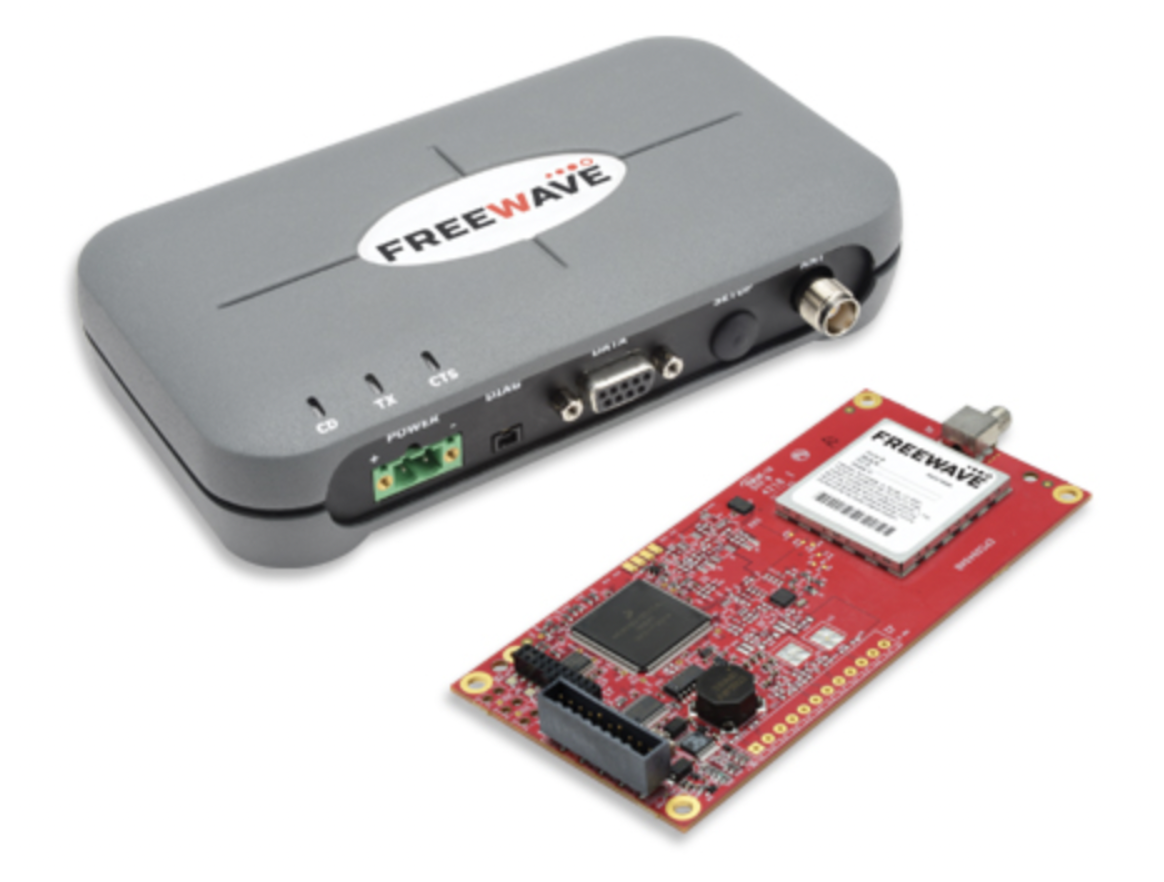Freewave FGR3 Radios

FreeWave FGR3 900 MHz industrial radios are designed for reliable, long-range serial data communication in demanding industrial and commercial environments. RSP Supply offers FreeWave FGR3 radios in the FGR3-C-U and FGR3-CE-U models, providing a cost-effective solution for connecting serial devices in applications where wired communication is impractical or unreliable.
The FGR3 series operates in the 900 MHz ISM band and is backward compatible with FreeWave FGR2, FGR, and DGR serial radios. This compatibility allows existing FreeWave networks to be expanded or upgraded without replacing installed infrastructure. FGR3 radios support multiple network topologies, including point-to-point, point-to-multipoint, and mesh configurations, offering flexibility for both small systems and large distributed networks.
Designed for long-range performance, FreeWave FGR3 radios can communicate over distances of up to 25 miles with clear line-of-sight and also support non-line-of-sight operation in challenging terrain. Built for industrial reliability, these radios are engineered to withstand harsh environmental conditions and offer advanced security features, including multiple layers of encryption and authentication to protect critical data transmissions.
More Information about Freewave FGR3 Radios
VHF radios (like FGR3) are deemed suitable for providing high-data-rate services because they can operate at a line-of-sight range, carrying plenty of megabits' worth of information useful for many evolving industrial control and automation applications, especially when combined with some sort of error-correcting code. In this context, "VHF" refers to radio waves with frequencies between 30 and 300 megahertz. Since VHF signals travel in a straight line (line of sight), they're less prone to interference or multipath distortion than UHF signals. That makes them more reliable, something you really want if your system can't afford to drop packet bursts during normal operation or under stress conditions.
Reliability is another extremely important attribute of Freewave FGR3 radios. They are built to operate in the face of unusual environmental conditions, such as those associated with outdoor and industrial settings, a lot of rain and/or snow, for instance, or very high temperatures.
Meeting today's high-security demands, the Freewave FGR3 radio offers multiple layers of encryption and strong authentication that protect all data transmitted via the radio from being accessed or tampered with by unauthorized persons. This is especially important for critical infrastructure applications where maintaining the integrity and confidentiality of the data is absolutely essential.
FAQs
Q: What models are available in the FreeWave FGR3 series?
The FreeWave FGR3 series includes models such as the FGR3-C-U and FGR3-CE-U, designed for industrial serial communication applications.
Q: Are FreeWave FGR3 radios compatible with older FreeWave radios?
Yes, FGR3 radios are backward compatible with FreeWave FGR2, FGR, and DGR series serial radios, allowing seamless network expansion.
Q: What network configurations does the FGR3 support?
FreeWave FGR3 radios support point-to-point, point-to-multipoint, and mesh network topologies.
Q: What are common causes of radio communication failure?
Common issues include incorrect radio configuration, electromagnetic interference (EMI), improper cable selection, damaged cables, and poor antenna installation or line-of-sight obstructions.
Q: Are FreeWave FGR3 radios suitable for harsh environments?
Yes, FGR3 radios are built for industrial and outdoor use and are designed to operate reliably in extreme temperatures and challenging environmental conditions.
Why Buy FreeWave FGR3 Radios from RSP Supply
RSP Supply offers the full selection of FreeWave FGR3 900 MHz industrial radios, including FGR3-C-U and FGR3-CE-U models. Our products support reliable long-range serial communication, network scalability, and secure data transmission. Customers rely on RSP Supply for technically accurate solutions, knowledgeable support, and dependable sourcing of FreeWave industrial wireless products.

